Clancy Tucker's Blog, page 150
June 11, 2018
12 June 2018 - DAWN SINCLAIR - GUEST AUTHOR & LYRICIST

DAWN SINCLAIR - GUEST AUTHOR & LYRICIST -
G'day folks,
Today, I interview a woman with many talents. Not only is she an author, but also a lyricist with over 240 song collaborations with artists and composers across the world.
Welcome, Dawn ...
1. TELL US A LITTLE ABOUT YOURSELF AND YOUR WRITING JOURNEY.I was fourth of five siblings and, as a constant smiler, I was sometimes called Miss Sunshine. I was also a curious child and my question “why?” was often heard by family and teachers, probably to their consternation.
Reading books, particularly something that challenged my word capabilities, was like breathing to me - it gave me a reason to get up in the morning and, apart from my family of dolls, was the only company I needed.
I was at once shy and precocious.
In my thirties, I attempted writing a novel but, as always self-critical to a fault, I threw every attempt away as soon as it was finished. I was in my forties before I felt confident enough to try in earnest and, meantime, I also delved into the notebooks and copied some of my poems onto a computer my uncle persuaded my husband and I to buy. The results of that amazed me.
People loved them and wanted more. Well, I had filled dozens of notebooks so that kept me busy when I wasn’t writing the book. Children of Hamelin was the first novel I ever considered satisfactory to show to anyone. It took about two years to get to the publishable stage and by then, I was hooked. I began the next book, The Eternal Question, right away and although it took several years to finish, it has been my proudest moment when it was also published.
2. WHEN AND HOW DID YOU BECOME A WRITER?
My love affair with my pen began at an early age and by the time I moved to grammar school I had already begun to write short stories for fun. Essays were a doddle for me and I’d happily write them for anyone who struggled with their homework assignments. When there was a poetry contest for the school magazine, I leapt right in and won with my first ever attempt. I guess that was when I began to fill the notebooks that became my constant companions over the next 20 or 30 years.
At times, I would write at night until the small hours, then grab a couple of hours of sleep before going to work. Those poems were never read by anyone but me and I frankly confess that I could barely believe I’d had a hand in their creation. It was as if my pen had a life of its own. To this day, I don’t know from where my ideas or words spring onto the page. But I am grateful they do!
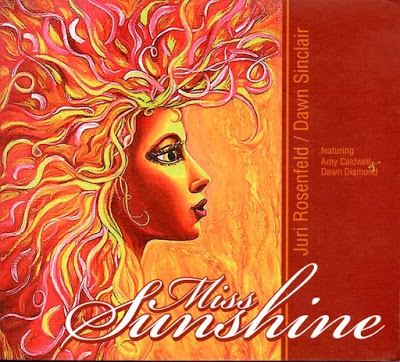
3. WHAT TYPE OF PREPARATION DO YOU DO FOR A MANUSCRIPT? DO YOU PLAN EVERYTHING FIRST OR JUST SHOOT FROM THE HIP?I have no idea where the ideas for my stories, poems or song-lyrics originate but I am definitely not the kind of writer who makes outlines or in any way plots the entire path from start to end before taking the plunge. I dive right in, start writing and generally let my characters give me the run-around until I can grasp the reins and get them under control, a process which might explain why a novel takes me years rather than months. A song-lyric usually takes hours, comes out pretty much whole and especially so if I have already been given the music to work with. Poems are born with all their fingers and toes intact. I am an introspective person so much of the work is done in my brain before I pick up the pen, I suppose.
4. WHAT DO YOU ENJOY MOST ABOUT BEING A WRITER?I like being called a writer. Or a poet. Or a novelist. I have always found that amazing. The validation of something I used to think was just my imagination playing tricks on me.
5. WHAT IS THE HARDEST THING ABOUT BEING A WRITER?Self-doubt. I am rarely satisfied with what I have written and I am convinced it isn’t good enough to show to anyone, much less to ask money from people to do so. It’s why I don’t try to market my books etc. It’s also probably why I do not make much money at it. I have convinced myself that money isn’t as important as self-worth. In other words, as long as I can reach a stage of satisfaction in the finished product, nothing else matters to me.
6. WHAT WERE YOU IN A PAST LIFE, BEFORE YOU BECAME A WRITER?I do not remember ever NOT being a writer. I have done other things to earn money, however, and most of them revolve around retail, although I began my working career in a library – of course.
7. WHAT IS YOUR GREATEST WRITING ACHIEVEMENT?I suppose finishing The Eternal Question felt greater to me than anything else.
8. WHAT ARE YOU WORKING ON AT THE MOMENT? I am writing a novel called Exiles.
9. WHAT INSPIRES YOU? I am inspired by every book I have ever read - and I read a lot!
10. WHAT GENRE DO YOU WRITE? I call it epic fantasy but it could as easily fit the action-adventure genre. I have no great talent for pigeon-holing to be honest.
11. DO YOU HAVE ANY TIPS FOR NEW WRITERS?Yes: WRITE. Forget about getting everything precise. Forget about the spelling and grammar and syntax – until AFTER the story is done. Get your story on paper and you are ninety-nine per cent there. Now, if I could only follow that advice…
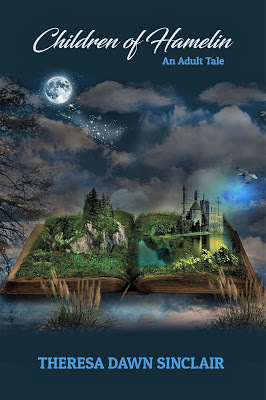
12. DO YOU SUFFER FROM WRITER’S BLOCK?Yes. I know my shortcomings and they are responsible for any blocks I suffer. Self-doubt has plagued me all my life.
13. DO YOU HAVE A PREFERRED WRITING SCHEDULE?I wouldn’t stick to it even if I did have one.
14. DO YOU HAVE A FAVOURITE WRITING PLACE? Before I was anything else but a poet I used to go to cafes and write while the world went by. Now I only write when I am sat at my desk. I prefer silence and as I am losing my hearing, that is easy to achieve. My very supportive husband is respectful of the need for quiet when I am “at it”.
15. WHO IS YOUR FAVOURITE AUTHOR AND WHY?I am an avid fan of thrillers and probably read all the current writers in that genre. I love them all. Outside of that genre, my favourite would be Steven Saylor for his wonderful Roman stories.
16. WHAT’S THE GREATEST COMPLIMENT YOU EVER RECEIVED FROM A READER?Someone wrote in a review of The Eternal Question: “This might have been co-authored by Stephen Hawking.” Doesn’t come better than that, does it?
17. WHAT WAS THE WORST COMMENT FROM A READER?Someone called my style “over-wrought”. She meant over-wordy and, it’s true, in the version she read, I had a tendency to over-do the adverbs and include too much description. I have since remedied that for the paperback version. So, whilst her comment seemed cruel, it actually helped enormously and I thank her for it.
18. WRITERS ARE SOMETIMES INFLUENCED BY THINGS THAT HAPPEN IN THEIR OWN LIVES. ARE YOU?In poetry and song-lyrics more than in my books. I want my characters to be unique and try not to put my own spin on their words and actions. But, I guess some people might recognise me or themselves in there somewhere. You cannot help that.
19. OTHER THAN WRITING, WHAT ELSE DO YOU LOVE?Travelling has been one the passions of my husband and I. Part of that is due to the fact that we love being together in strange new places. We met when we were both very young (I was 16 and he was 18) and have grown closer with every passing year. Mind you, apart from our sense of humour and our great love for one another, we have very little in common.
20. DID YOU HAVE YOUR BOOK / BOOKS PROFESSIONALLY EDITED BEFORE PUBLICATION?In one respect, you could say so because I bought a professional editing application and used that to thoroughly check everything before publishing. In fact, I use it during the writing process too – not such a good idea because it distracts me but I have some bad habits that won’t go away (saying “that” too darned often for one) and I like to think I can train by getting them at an early age. Ha!
21. DESCRIBE YOUR PERFECT DAY.Not too hot or cold, blue skies and a gripping thriller in my hand.
22. IF YOU WERE STUCK ON A DESERT ISLAND WITH ONE PERSON, WHO WOULD IT BE? WHY?My husband. At least I could have a jolly good laugh every day.
23. WHAT WOULD YOU SAY IF YOU HAD THE CHANCE TO SPEAK TO WORLD LEADERS?I’d say “why?” and “why not?” I often wonder if they ask themselves that before they make such disastrous decisions.
24. WHAT ARE YOUR PLANS FOR THE FUTURE?I want to finish the book and then give my pen a retirement present.
25. WHAT ARE YOUR VIEWS ON BOOK TRAILERS? DO THEY SELL BOOKS?I’ve never seen one. I doubt I would like them. One of the great things about picking up a book is the thrill of discovery. Similarly, I hate film or TV trailers and feel that their creators shoot themselves in the foot for showing them.
26. DO YOU SEE YOURSELF IN ANY OF YOUR CHARACTERS?Never.
27. DOES THE PUBLISHING INDUSTRY FRUSTRATE YOU?I think they are old-fashioned and too smug for their own good but after early efforts in my career, I realised that trying to deal with them was too distracting. I prefer to write and dream.
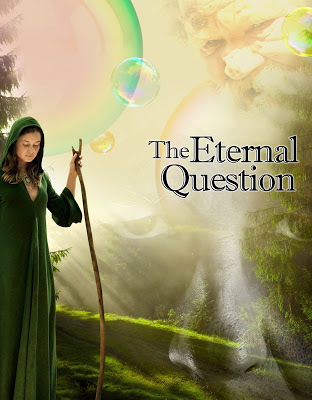
28. DID YOU EVER THINK OF QUITTING?No. I have always said I write to satisfy something inside of me and if I become disillusioned I will stop. Until now, it has not happened but I do see a time soon when I might retire altogether.
29. WHAT WAS YOUR FAVOURITE MANUSCRIPT TO WRITE? WHY?The easiest was the first one I finished – Children of Hamelin. But The Eternal Question, although much more complex and headache-making, was definitely more satisfying. It’s become my favourite which is why I am writing a follow-up.
30. HOW WOULD YOU DEFINE ‘SUCCESS’ AS A WRITER?Anyone who manages to complete a novel can give themselves a pat on the back. It’s harder than you think! Success is a many-faced creature and for me, is too illusive to look for. I am just proud of what I have written.
31. WHAT SHOULD READERS WALK AWAY FROM YOUR BOOKS KNOWING? HOW SHOULD THEY FEEL? I would great kick out of it, if they said “Wow, I never thought of it that way before!” People have said that to me in the past and it gave me a big thrill.
32. WOULD YOU LIKE TO HAVE YOUR BOOKS MADE INTO MOVIES? EVER WRITTEN A SCREENPLAY?I have not written a screen play but The Eternal Question would have made a great film, I have always thought. It is rounded with a surprise ending. But then, I would say that, wouldn’t I?
33. HOW MUCH THOUGHT GOES INTO DESIGNING A BOOK COVER?Oh gosh, I agonize over mine, believe me.

34. WHAT’S YOUR ULTIMATE DREAM? I suppose I’d consider my life a roaring success if I had a song of mine in the music charts or a poem of mine quoted by a famous person or - top of my dream-chart - if Ron Howard or James Cameron decided my story would be great for their next movie.
35. WRITING IS ONE THING. WHAT ABOUT MARKETING YOU, YOUR BOOKS AND YOUR BRAND? ANY THOUGHTS?I cannot afford to employ someone to do it and I have the wrong nature to do it myself—bragging is anathema to me. Sad really.
36. ARE YOUR BOOKS SELF-PUBLISHED?
Yes, as a technophobe, I struggled but found loads of useful help online and my husband was amazing too.
37. DESCRIBE YOURSELF IN FIVE WORDS.World-creator. Poet. Optimist. Life-loving. Funny.
38. WHAT PISSES YOU OFF MOST?Intolerance. Why can’t people stop being so intolerant of others? We cannot all be the same and if we were, how ghastly would life be then?
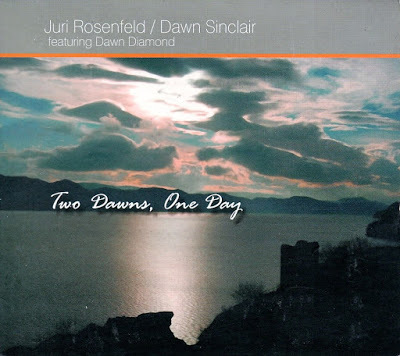
39. WHAT IS THE TITLE OF THE LAST BOOK YOU READ? GOOD ONE?It was a David Baldacci thriller – the title is unimportant because he never writes a bad one.
40. WHAT WOULD BE THE VERY LAST SENTENCE YOU’D WRITE?Thanks pen!!
41. WHAT WOULD MAKE YOU HAPPIER THAN YOU ARE NOW? CARE TO SHARE?I think a best-selling book under my belt would do it.
42. ANYTHING YOU’D LIKE TO ADD?Wouldn’t it be nice if people left reviews every time they read a book? I wouldn’t mind if they were not always rave-reviews. I don’t expect everyone to like everything I write but it would be nice to know they actually read the books. It’s all any author hopes for, surely.

WEBSITE

Clancy's comment: Well done, Dawn. I agree with you about reviews. Good luck with your talented work, and more strength to your arm.
I'm ...


Published on June 11, 2018 15:28
June 10, 2018
11 June 2018 - QUOTES FROM WRITERS

QUOTES FROM WRITERS
G'day folks,
Here are some interesting quotes for you writers from those who have done the hard yards.



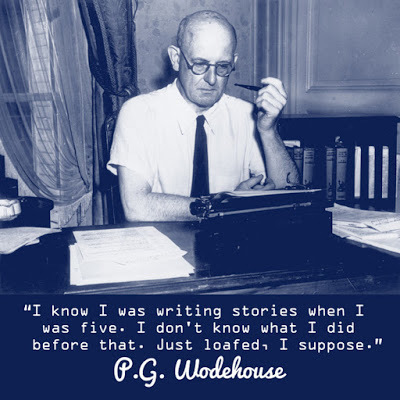


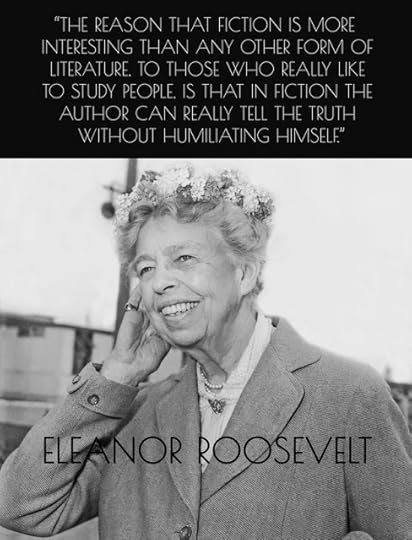
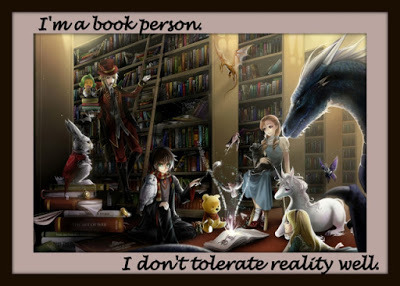
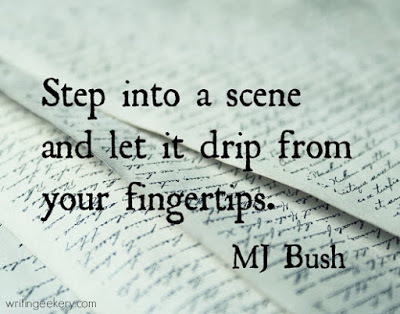



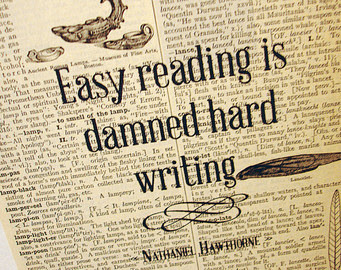


Clancy's comment: I hope these inspire those of you who have doubts.
I'm ...


Published on June 10, 2018 14:10
June 9, 2018
10 June 2018 - WEIRD AND WONDERFUL STUFF
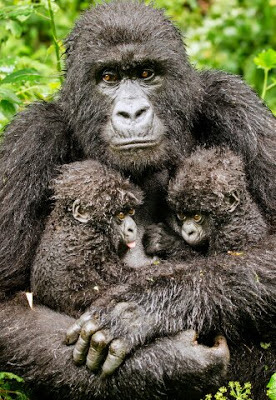
WEIRD AND WONDERFUL STUFF
G'day folks,
Welcome to some more weird and wonderful photographs from around the world.











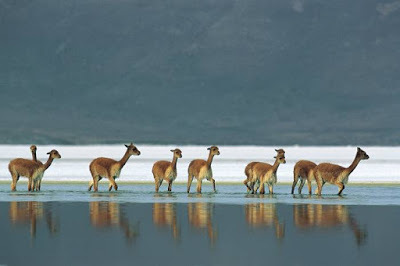

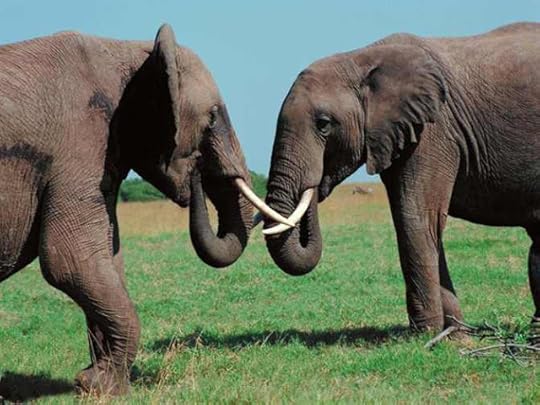



Clancy's comment: Wow. I love many of these, especially the mouse and the zebra crossing.
I'm ...


Published on June 09, 2018 14:10
June 8, 2018
9 June 2018 - TOP QUOTES WORTH READING
 TOP QUOTES WORTH READING
TOP QUOTES WORTH READING G'day folks,
Time for some great quotes to get you cranked up for the day.











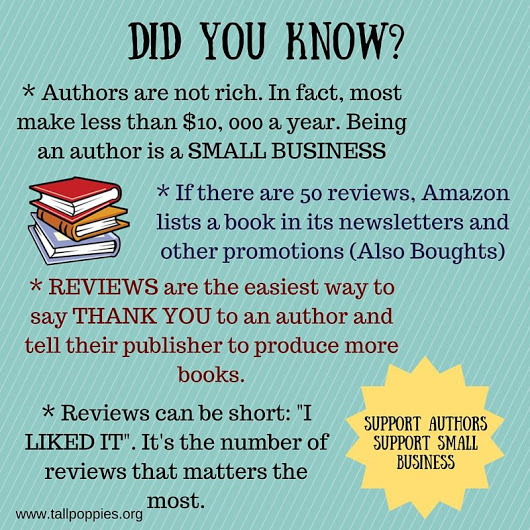



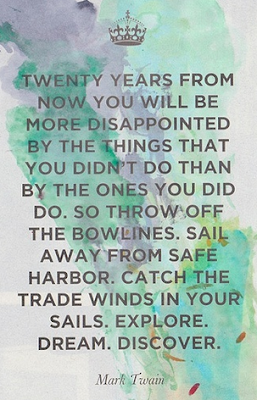

Clancy's comment: Mm ... A few to think deeply about, eh?
I'm ...


Published on June 08, 2018 15:17
June 7, 2018
8 June 2018 - U.S.A - A WALK DOWN MEMORY LANE
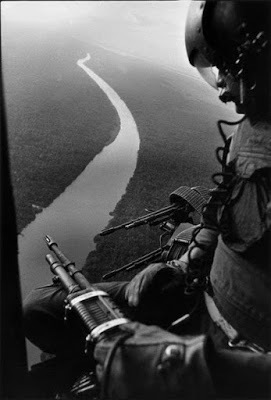
U.S.A - A WALK DOWN MEMORY LANE -
G'day folks,
Welcome to some great snapshots from the past.
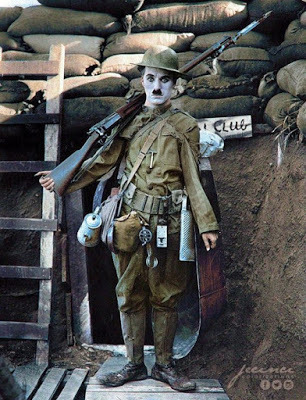
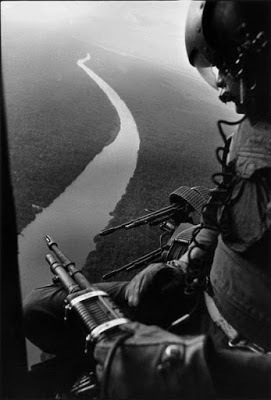
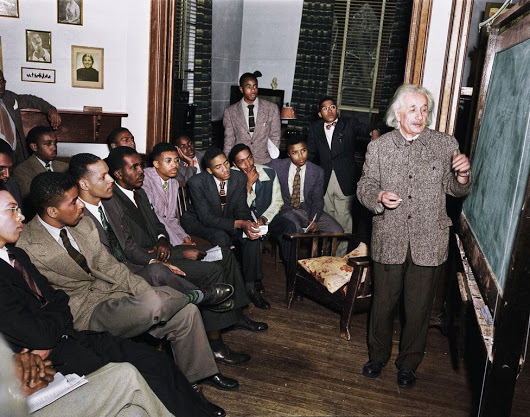

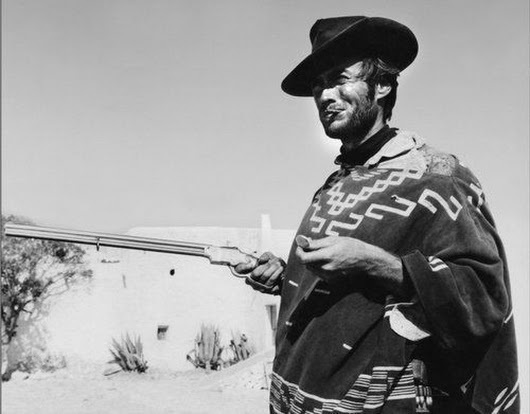

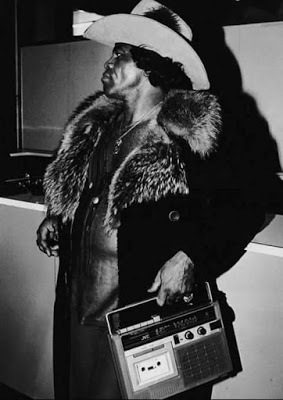
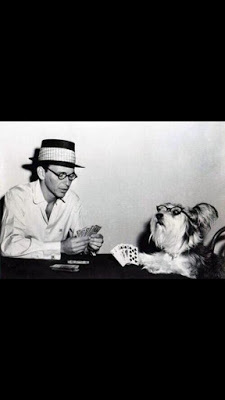
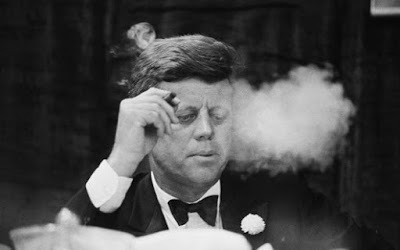
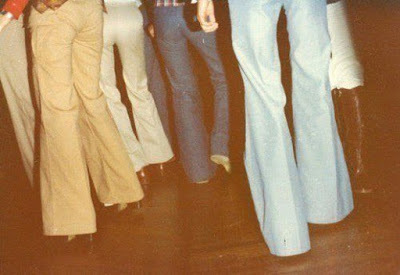

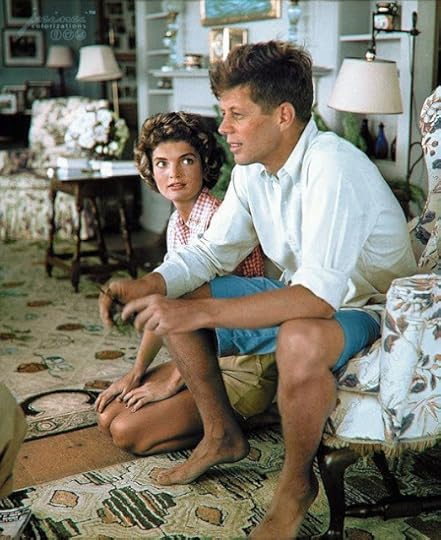
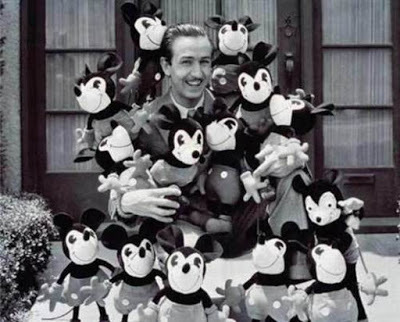
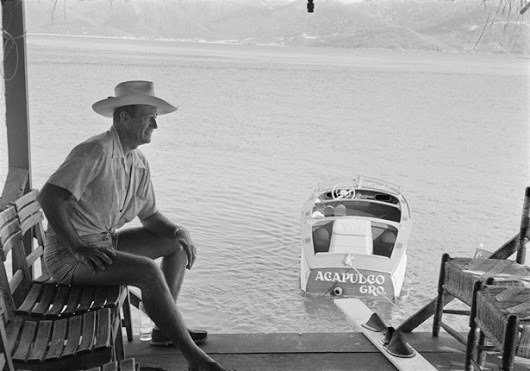
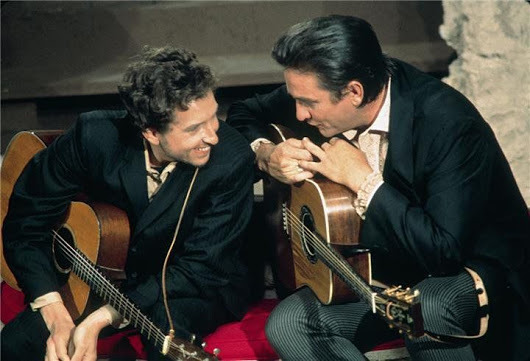

Clancy's comment: Ah, loved those flairs.
I'm ...


Published on June 07, 2018 12:46
June 6, 2018
7 June 2018 - FACTS ABOUT THE IBIS

FACTS ABOUT THE IBIS
G'day folks,
The ibises are a group of long-legged wading birds in the family Threskiornithidae, that inhabit wetlands, forests and plains. "Ibis" derives from the Latin and Ancient Greek word for this group of birds.

Ibis are a groupof birdsthat are found all over the world, but more commonly in the more temperate regions of the southern hemisphere. Ibis are most well known for their long necks and beaks which help them to get food out of the water.
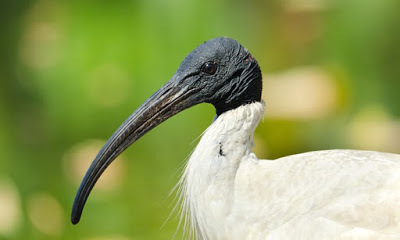
The ibis is found inhabiting areas where there are large amounts of water. The ibis enjoys to eat aquatic animalsso it prefers to be in areas such as swamps, marshes and wetlands where food is in abundance.
There are roughly 30 different speciesof ibis found around the world, that vary in sizeand colourdepending on the species. The ibis can vary in sizefrom the tiny 5cm tall dwarf olive ibis to the giant ibis which to grow to more than a meter in height and inhabiting the remote forests of Cambodiaand parts southern Laos.

Ibis are generally very sociable birdsthat gather together in large flocks both to feed and to find a partner during the mating season. Despite their relatively large size, many speciesof ibis rest in the safety of the trees and not on the ground.
Although the ibis is an omnivorous birdthat eats both plants and animals, when there are plenty of aquatic speciesabout, the ibis has more carnivorous diet. The ibis hunts fish, insects, small reptiles, frogs, small mammalsand crabs,which the ibis picks out of the mud using it's long and pointed beak.

Due to the relatively large sizeof the ibis, it has few natural predatorsbesides large birdsof preythat often steal the eggs of the ibis, or the young. Snakesare known to eat the ibis around the world, along with wild catsand foxes.
During the mating season, the female ibis builds a nest in the trees that is made out of sticks and reeds. Ibis commonly nest close to a large amount of water such as a river or a lake, with other water-birds such as herons.

The female ibis lays up to the 3 eggs which hatch after an incubation period of just a few weeks. The tiny ibis chicks are dependent on their mother for food, and develop quickly meaning that they leave the nest when they are about 6 weeks old.

Clancy's comment: I've photographed many of these birds in Australia, and also in Laos. They sure are not the prettiest, but interesting to watch and observe in flight.
I'm ...


Published on June 06, 2018 14:56
June 5, 2018
6 June 2018 - CONEY ISLAND'S ABANDONED SUBMARINE

CONEY ISLAND'S ABANDONED SUBMARINE
G'day folks,
Welcome to another graveyard with some history.
T oday’s New York adventure takes place at one of its favourite, and most nostalgic, vacation destinations: Coney Island. Home to one of the world’s oldest ferris wheels, a hundred year old roller coaster, and the famous Nathan’s deli, serving hotdogs since 1916. But twenty minutes walk away behind the famous Boardwalk is Coney Island Creek, a largely forgotten backwater.

Until the bridges and landfill turned Coney Island into a peninsular, it was once cut off entirely from Brooklyn; back then Coney was truly an island. Today however, the Creek is rarely visited, home to salvage yards, auto repair shops, and a waste recycling plant. A far cry from the thrills of the nearby fun fair and beaches, it is also home to the most captivating of abandoned delights– a ship graveyard.

Even more thrilling, in the midst of the decaying shipwrecks, is a mysterious, forgotten submarine, that was once at the centre of a doomed expedition to search for treasure on the sunken Andrea Doria!
There are about two dozen shipwrecks in the creek, but no-one knows when they arrived, or where they came from. In the 1950s, many were still afloat. “We used to play on them”, recalled Charles Denson, author of “Coney Island Lost and Found”.



It is thought some were old whaling ships, ancient US Navy vessels, or forsaken barges, which were scuttled and left to rot. Over a decade ago, the New York Times went to explore the ship graveyard. They found, “the ribs of ships emerged from the shallows like bones.”
Ten years ago, the Times found a member of a local yacht club, then aged 87. Armando Gargiulo recalled how, “the creek was a wild place, a rum runner’s haven, and a dumping ground for everything from bodies to old cars. There was a time when a Chinese junk sailed into the Creek. Somewhere left in the shallows to rot, others were burned to their waterlines.”
Walking over the ice, amongst the ruins of these old ships, there is one that stands out; mostly because it is painted yellow, and looks a lot like a submarine.

For years, rumours surrounded the mysterious submarine wrecked and marooned in Coney Island Creek. Some thought it dated back to the Civil War and the era of the first submarines, such as the Monitor, built in the nearby Brooklyn Navy Yards. With its futuristic looking hull, it could well have sprung from the pages of Jules Verne.
In reality, the story of the submarine is every bit as fantastic as Twenty Thousand Leagues Under the Sea. In 1956, the Italian ocean liner, the SS Andrea Doria, sunk off the coast of Massachusetts. She had collided with the Swedish MS Stockholm, carrying to the bottom of the ocean 52 souls, as well as a supposed treasure of a million dollars.
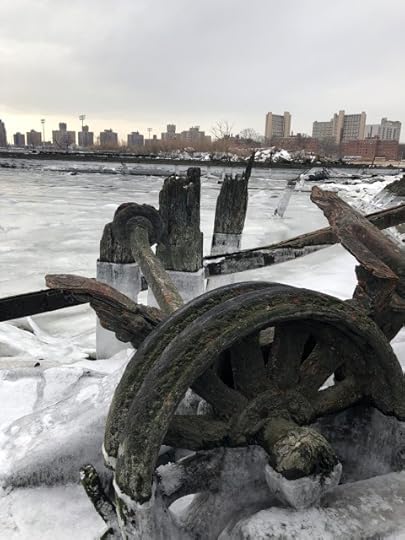
Brooklyn shipyard worker Jerry Bianco planned to build a miniature submarine from the scrap metal yards along Coney Island Creek, and dive for the wreck. Denson recalled the bright yellow submarine, painted not in homage to the Beatles, but because Bianco snapped up a good deal on cheap, yellow chromium paint. “It was a honeycomb of steel”, explains Denson. “It was an incredible work of art”.



Bianco christened his submarine the Quester I, and she was launched with high hopes in 1970, with the traditional bottle of champagne. Unfortunately, the Quester immediately tilted sideways, and got stuck in the Creek. According to newspaper reports, the submarine was eventually righted, but a storm later in 1970, saw the ill-fated submarine break its moorings. The Quester once more stuck in the Creek, largely in the position it still holds today. Half submerged, with its conning tower and upper half of the hull visible, the stricken submarine lists into the water, as though preparing for one last dive into the ocean.

Clancy's comment: Well, who'd have ever known, eh?
I'm ...


Published on June 05, 2018 14:59
June 4, 2018
5 June 2018 - FASCINATING BIRD CAGES

FASCINATING BIRD CAGES
G'day folks,
Yes, people collect all sorts of things, but check out these fabulous bird cages from around the world. Some are now worth a small fortune, but whatever you do, don't show these to your pet canary. He might become disgruntled if he's sitting in some crappy wire or cane construction you purchased cheaply at the local pet shop.
















Clancy's comment: Extraordinary quality, eh? And, as you can see, my favourite cat above is viewing them with a keen eye.
I'm ...


Published on June 04, 2018 14:30
June 3, 2018
4 June 2018 - D.C STEPHENSON - GRAND DRAGON OF INDIANA’S KKK
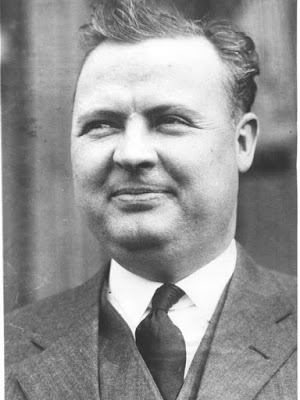
D.C STEPHENSON - GRAND DRAGON OF INDIANA’S KKK -
G'day folks,
Here are some historical facts about a master mongrel of the lowest order.
On the night of March 15, 1925, Madge Oberholtzer received an urgent telephone call. It was D.C. Stephenson, the Grand Dragon of Indiana’s KKK. He wanted her to come immediately. Oberholtzer was an attractive young woman working in a state education program who had met Stephenson at a banquet for the Governor of Indiana. At first, she’d been wary of Stephenson’s aggressive advances, but ultimately gave in, attending two dinners with him. On this night however, she brushed aside her reservations and went to his house. When she arrived, she could see that Stephenson, an ardent prohibitionist, was drunk. Some of Stephenson’s men were there. They made drinks and insisted she take one. She was afraid, and said no.
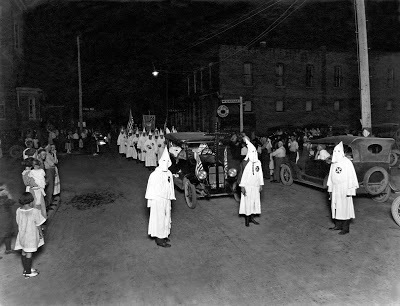
But Stephenson insisted more forcefully, and Oberholtzer, feeling powerless, had three drinks — and then vomited. Stephenson told her he was in love with her and demanded that she come with him to Chicago. She said no. What had originally seemed like ardor now had a vicious, uncompromising edge. She was terrified and told him she wanted to go home. But Stephenson was used to getting his way. “No, you cannot go home,” he said. “You are going with me to Chicago.”
A powerful Klansman with a history of political work, Stephenson was a skillful political manipulator who believed he had impunity. As Linda Gordon revealed in her 2017 book on the 1920s Klan, The Second Coming, Stephenson had beaten his previous wives (there had been at least three) and attempted to rape other women, and gotten away with it. As Oberholtzer would later say, “He said he was the law in Indiana.”
Stephenson, who was born to sharecroppers in Houston, Texas, in 1891, got his start working as a promoter for the coal mining and media industries, but it quickly became clear that he was best at boosting himself, mostly by embellishing his résumé. He got involved in the Democratic party and joined the KKK in 1920, climbing his way through the ranks in a mere two years. In 1922, the Klan’s Imperial Wizard named Stephenson Grand Dragon of Indiana. Stephenson was late to his own Grand Dragon inauguration because, as he boasted to the roaring crowd of 100,000 people, “The President of the United States kept me unduly long counseling on matters of state.”
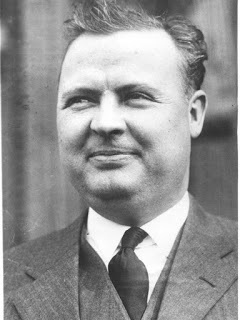
The 1920s was the Klan’s heyday, and the hate group held sway in nearly all the venues of power in American society. The same year Stephenson kidnapped Oberholtzer, he nudged a Republican, Ed Jackson, into the Indiana governorship. He had the ear of nearly every politician in the state, exerting influence on legislation the way DC lobbyists do today. He had plans to run for office, perhaps the Senate — or higher. “I’m going to be the biggest man in the United States!” he said.
Stephenson, like his hateful colleagues, made boatloads of money off the Klan, which was infamous for giving kickbacks to its recruiters. He moved into a white columned mansion in a posh Indianapolis suburb and purchased a yacht, valuedat $125,000 — nearly $2 million in today’s sums.
The Klan’s relationship with women was complex. The group had petered out in the years after the Civil War, but reemerged in 1915, rallying against the perceived dark skinned threat against white women as thousands of immigrants came to American shores. But much to the chagrin of sexist Klansmen, white women had ideas of their own, and those ideas didn’t involve staying at home and waiting around while hatemonger men in hoods got all the glory.
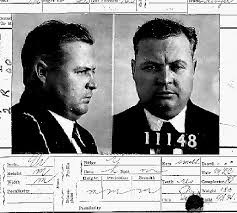
In the years after suffrage, white women were emboldened to enter civic life. White supremacist women were no exception. They rose through the Klan’s ranks, taking up their cause with powerful effect. In fact, arguably, the most powerful person in the Klan was Elizabeth Tyler, the P.R. mastermind behind the Klan’s more expansive vision of hate that included not just black people, but also immigrants, Jews, Catholics, and communists. By the early 1920s, women created their own autonomous arm of the KKK. To the untrained eye, the Klan looked like a friendly place for white women.
Oberholtzer’s story put an end to all that. In the days after the attack, she catalogued each grisly detail for the police. After rejecting Stephenson several times, he and his men had shown her their loaded guns and taken her to a train bound for Chicago. Once in the car, Stephenson took off her clothes and held her down, raping her. “He chewed me all over my body,” she said, “bit my neck and face, chewing my tongue, chewed my breasts until they bled, my back, my legs, my ankles and mutilated me all over my body.”
In the morning, Stephenson took her to a hotel, where one of his lackeys bathed her wounds. According to Oberholtzer, Stephenson apologized, saying “that he was three degrees less than a brute,” to which she replied, “You are worse than that.” She told Stephenson that she needed to go to the drugstore to get some makeup, and one of his men took her. At the drugstore she purchased a box of mercury tablets. Back in the hotel room alone, she took all of them in order “to save my mother from disgrace.”
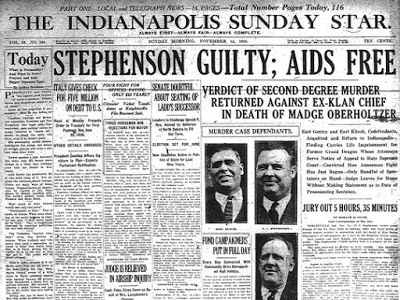
A few hours later, she vomited blood and deliriously told the men what she had done. Stephenson insisted that she must marry him and then seek treatment. She said no. “I did not care what happened to me,” she said. On the drive back to Indiana, she screamed in agony and vomited all over the seats, but the men wouldn’t stop. When they finally arrived back at Stephenson’s house hours later, he told her, “You will stay right here until you marry me.” She refused and was taken to a room above his garage. The next morning a servant carried her home. Stephenson instructed her to tell everyone that she had been in a car accident. “You must forget this,” he said. “What is done has been done, I am the law and the power.”
Oberholtzer’s testimonyagainst Stephenson was one of her final acts. She was dead 29 days after the attack — the cause of death likely the combination of infection from the biting wounds and poisoning from the mercury pills. Much to his surprise, Stephenson was arrested not long after. Politicians began renouncinghim. In November, he was brought to trial. The gallery was crammed with people trying to get a glimpse of the monster as he fell.
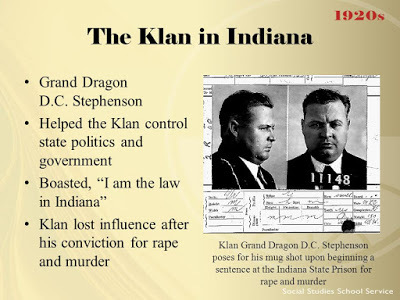
Stephenson was convicted of second degree murder and sentenced to life in prison. Afterwards, he began to name names, revealing that vast swaths of Indiana’s politicians were on the Klan payroll. The governor and several other high ups were charged with conspiracy. The Klan’s image would never recover, and by the end of the decade, the organization was entirely wiped out. It’s a comforting idea. Powerful heads had rolled. Yet, the Klan couldn’t have risen to such staggering power without the nation’s indifference and a groundswell of overt support. One hundred thousand people had cheered at Stephenson’s inauguration — but they were only outraged once he had a white woman’s blood on his hands.

Clancy's comment: Like all who think they are above the law, they squeal like a piglet when caught.
I'm ....


Published on June 03, 2018 14:35
June 2, 2018
3 June 2018 - THIS DAY IN HISTORY - Tiananmen Square

THIS DAY IN HISTORY - Tiananmen Square -
G'day folks,
A lot happened on this day in history, but here is one notable event. 'Tank Man' is the nickname of an unidentified man who stood in front of a column of tanks on June 5, 1989, the morning after the Chinese military had suppressed the Tiananmen Square protests of 1989 by force.
With protests for democratic reforms entering their seventh week, the Chinese government authorizes its soldiers and tanks to reclaim Beijing’s Tiananmen Square at all costs. By nightfall on June 4, Chinese troops had forcibly cleared the square, killing hundreds and arresting thousands of demonstrators and suspected dissidents.

On April 15, the death of Hu Yaobang, a former Communist Party head who supported democratic reforms, roused some 100,000 students to gather at Beijing’s Tiananmen Square to commemorate the leader and voice their discontent with China’s authoritative government. On April 22, an official memorial service for Hu Yaobang was held in Tiananmen’s Great Hall of the People, and student representatives carried a petition to the steps of the Great Hall, demanding to meet with Premier Li Peng. The Chinese government refused the meeting, leading to a general boycott of Chinese universities across the country and widespread calls for democratic reforms.
Ignoring government warnings of suppression of any mass demonstration, students from more than 40 universities began a march to Tiananmen on April 27. The students were joined by workers, intellectuals, and civil servants, and by mid-May more than a million people filled the square, the site of Mao Zedong’s proclamation of the People’s Republic of China in 1949.

On May 20, the government formally declared martial law in Beijing, and troops and tanks were called in to disperse the dissidents. However, large numbers of students and citizens blocked the army’s advance, and by May 23 government forces had pulled back to the outskirts of Beijing. On June 3, with negotiations to end the protests stalled and calls for democratic reforms escalating, the troops received orders from the Chinese government to seize control of Tiananmen Square and the streets of Beijing. Hundreds were killed and thousands arrested.

In the weeks after the government crackdown, an unknown number of dissidents were executed, and hard-liners in the government took firm control of the country. The international community was outraged by the incident, and economic sanctions imposed by the United States and other countries sent China’s economy into decline. By late 1990, however, international trade had resumed, thanks in part to China’s release of several hundred imprisoned dissidents.

Also on this day in history …American Revolution1780 Former Massachusetts Governor Thomas Hutchinson dies in England Automotive1957 U.S. Supreme Court rules against Du Pont in General Motors suit Civil War1864 Union disaster at Cold Harbor Cold War1990 Bush and Gorbachev end second summit meeting Crime2010 Van der Sloot arrested for murder in South America Disaster1989 Natural gas explosion kills 500 in Russia General Interest1800 President Adams settles in new capital 1937 Duke of Windsor weds 1965 An American walks in space Hollywood2002 Lew Wasserman dies Literary1936 Larry McMurtry is born Music1956 Rock and roll is banned in Santa Cruz, California Old West1936 Western author Larry McMurtry is born Presidential1800 President John Adams moves into a tavern in Washington, D.C. Sports1937 Josh Gibson hits ball 580 feet in Yankee Stadium Vietnam War1968 Le Duc Tho joins negotiations in Paris 1970 Nixon calls Cambodian operation a success World War I1916 U.S. President Woodrow Wilson signs National Defense Act World War II1940 Germans bomb Paris

Clancy's comment: I clearly recall when this happened in Tiananmen Square. Love ya work, Tank Man.
I'm ...


Published on June 02, 2018 14:20



